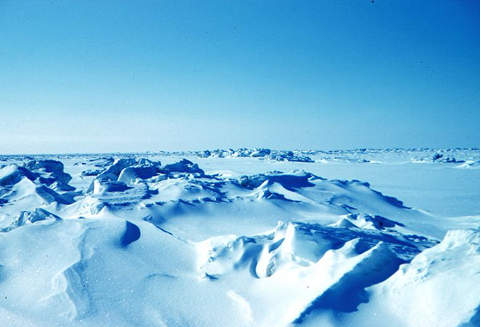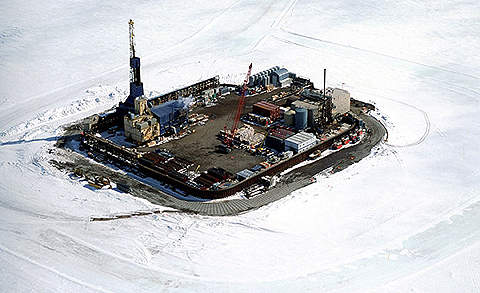British Petroleum’s (BP) Liberty offshore oilfield is located four miles off the northern coast of Alaska in Foggy Island Bay in the Beaufort Sea. The estimated recoverable reserves of the oilfield are approximately 100 million barrels of oil and 78 billion cubic feet of natural gas. The oilfield is expected to produce more than 40,000bpd.
BP is investing $1.5bn in developing the project. Production from the field is expected to last for 20-40 years. BP plans to develop the oilfield from its existing facilities in the Endicott field in Prudhoe Bay. Production from the oilfield will be carried out using the world’s first ultra extended reach drilling (u-ERD) technology.
In July 2010 BP announced that it would start development drilling for the Liberty project in 2011.
The project was originally scheduled to start production in 2011 with development drilling commencing towards the end of 2010.
The project has come under criticism following BP’s Deepwater Horizon explosion in the Gulf of Mexico.
BP is delaying the field development due to increased scrutiny from state and federal officials. The field is now expected to start production in 2013.
Liberty rig
Drilling activities for the Liberty oilfield will be carried out using the massive Liberty rig. BP contracted Parker Drilling to construct the rig, which involved a total cost of $215m. As of April 2010, assembly of the rig is nearing completion at BP’s Endicott facilities.
The rig was constructed at Vancouver, British Columbia, Canada, and brought to BP’s Endicott facilities by a 400ft long and 105ft wide heavy-lift barge constructed by Crowley Maritime Corp. On completion of assembly, the rig will be 240ft high.
The Liberty rig will be fitted with eight 2,640hp engines and powered by natural gas. The top drive of the rig will be 105,000ft / lbs of torque. The rig will have the capacity to accommodate 84 people.
To withstand the Arctic conditions, the rig is being constructed using low temperature-tolerant steel. Thermal sound dampening insulation has also been provided for the rig. An integrated control system will provide centralised monitoring, command and management facilities.
Liberty field development
Drilling activities for the Liberty oilfield will be carried out from BP’s Endicott Satellite Drilling Island. The man-made gravel island will be expanded to accommodate the drilling activities and production facilities of the Liberty field. BP originally planned to build an offshore gravel island above the Liberty field but dropped the idea due to the huge costs involved.
The Liberty field’s wells are situated eight miles from the Endicott field. About six wells will be required for starting full production of the field. Four of the wells will produce oil and the other two will be used for injecting water into the field. The first well will be drilled to infuse drilling fluids, following which work on the four production wells will be started.
BP will use advanced 3D seismic surveying to determine the exact targets for the Liberty wells. The seismic survey transmits sound signals from the surface, which are echoed from subsurface rock formations. The signals are then used to generate detailed three dimensional images of the subsurface.
The seismic survey was required to ensure that no obstacles are encountered while drilling. Any unexpected obstacles can lead to a bend in the well which extends the drag on the drill pipe.
As a result, additional force will need to be applied to the pipe, which can hamper drilling activities.
The u-ERD technology used to develop the field will extend the reach of the wells to world-record distances of 34,000-44,000ft.
The wells will follow a vertical path beneath the drilling rig and then turn to a horizontal position in the direction of the field. The well will again bend into a vertical position and penetrate into the field reservoir. The length of the wells will require fluid pressures of about 7,500lb / in² to pump oil from the reservoir.
Liberty field discovery
The first well of the Liberty oilfield was discovered by BP in May 1997. BP presented a development programme for the field in February 1998 to the US Minerals Management Service (MMS).
In 2002, the US MMS disapproved the plan due to environmental concerns. As a result, development of the field was put on hold. Following BP’s decision to use ultra-extended-reach drilling, development began in 2005.
Pipeline
The oil produced from the Liberty field will be transferred to the trans-Alaska oil pipeline through the Endicott sales-oil pipeline.
Liberty project contracts
M-I SWACO will provide the front end engineering design for fluids and environmental solutions for the field. Parker Drilling was contracted in 2006 to construct the Liberty rig. Parker Drilling won an additional contract in 2009 to carry out the rig’s operations and maintenance.
Worley Parsons was contracted to provide the conceptual evaluation and system design, pipeline design and pipe-in-pipe system configurations.
Worley also provided the design of the offshore pipeline system, and its maintenance and repair procedures. In addition, the company provided assistance in obtaining permits.
In 2008, Worley subcontracted ProSep Technologies to supply an inlet separator, discharge scrubbers and an inline deliquidiser for the project.
In February 2009, ProSep won the contract to supply a multiphase carbon steel separator with internals for the project.
Among other contractors Alaska Industrial Construction carried out construction of bridges for the project. The contract for island construction was awarded to Nanuq and Alaska Frontier Constructors. Arctic Slope Regional Corporation carried out engineering and power module fabrication. A three-storey rig camp was constructed by Delta Leasing.










